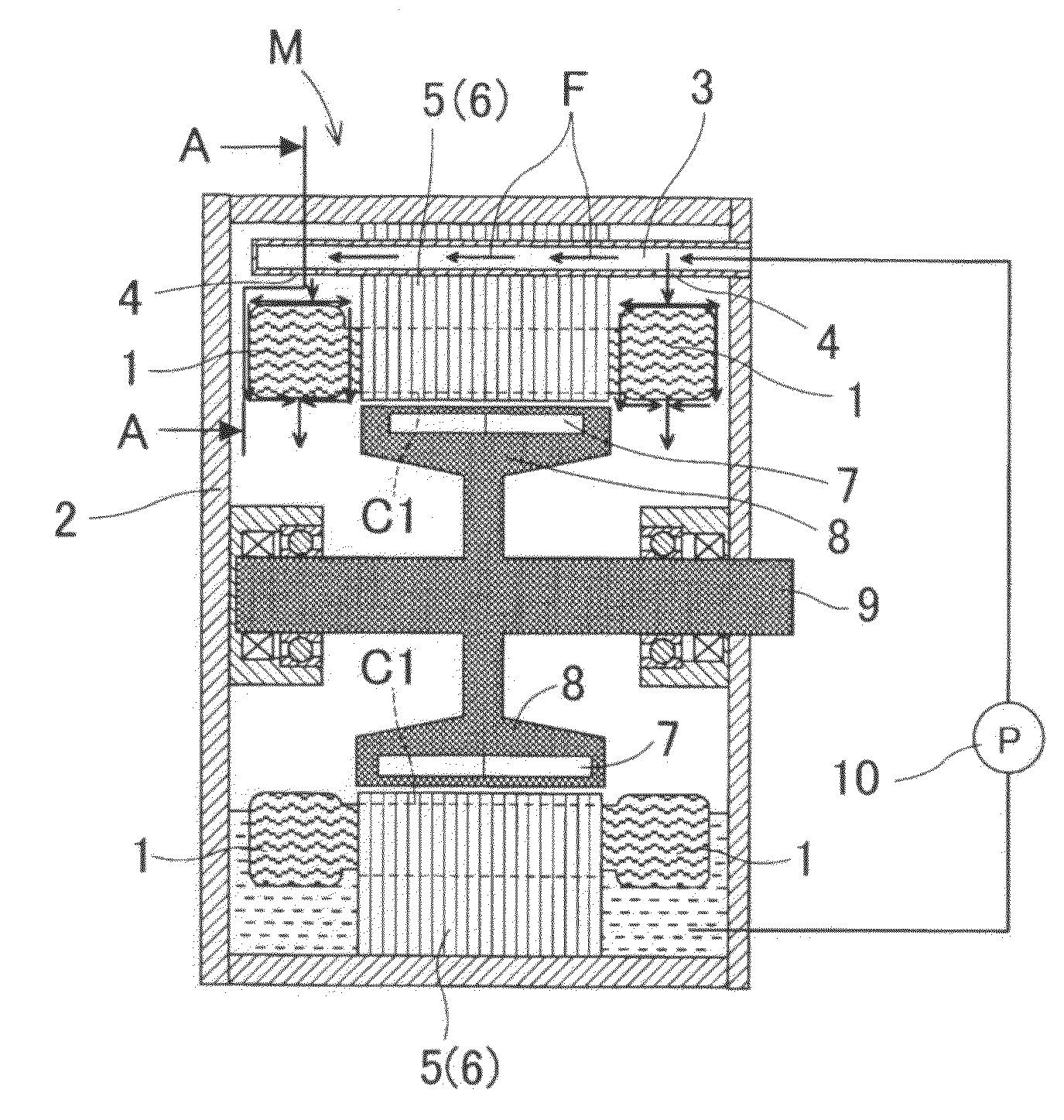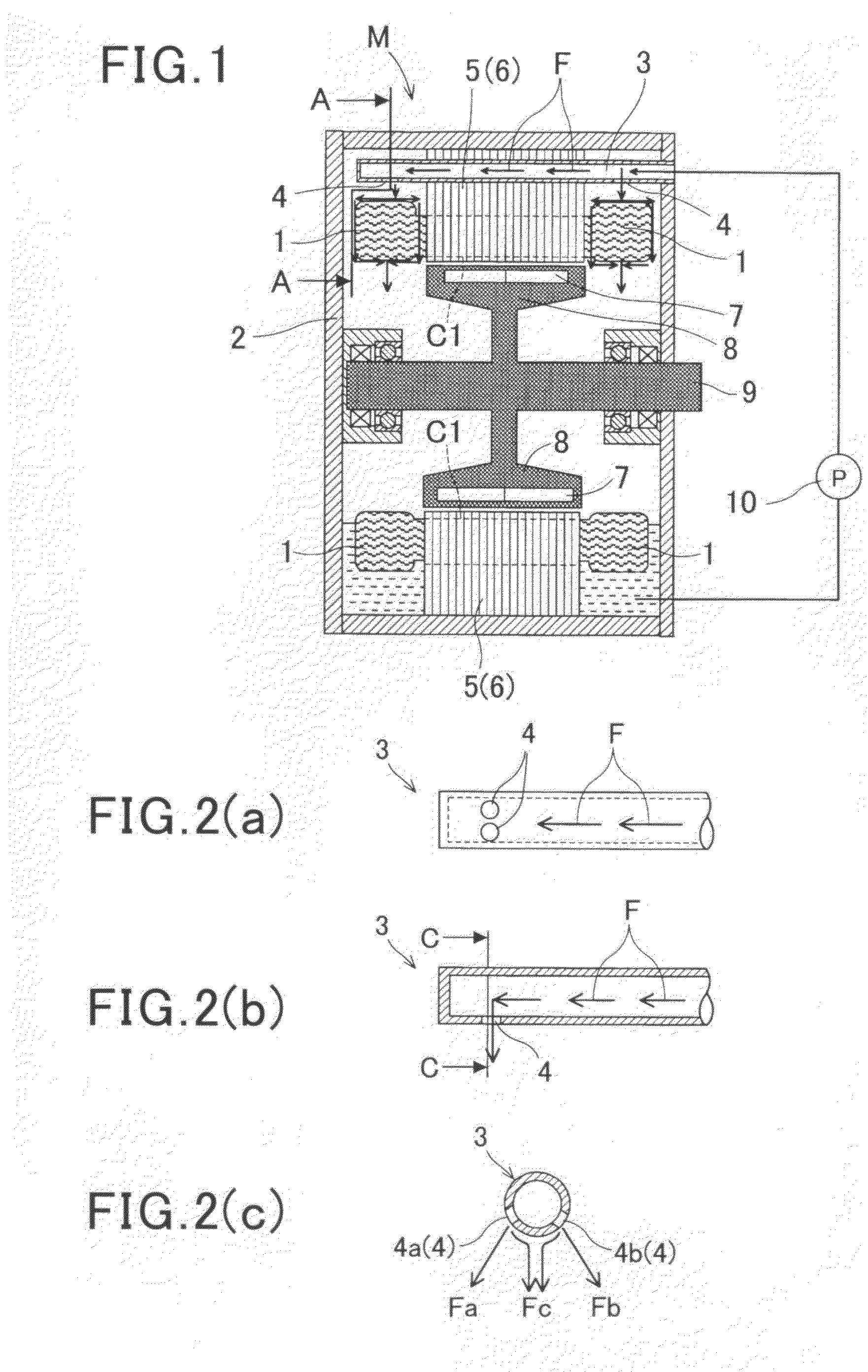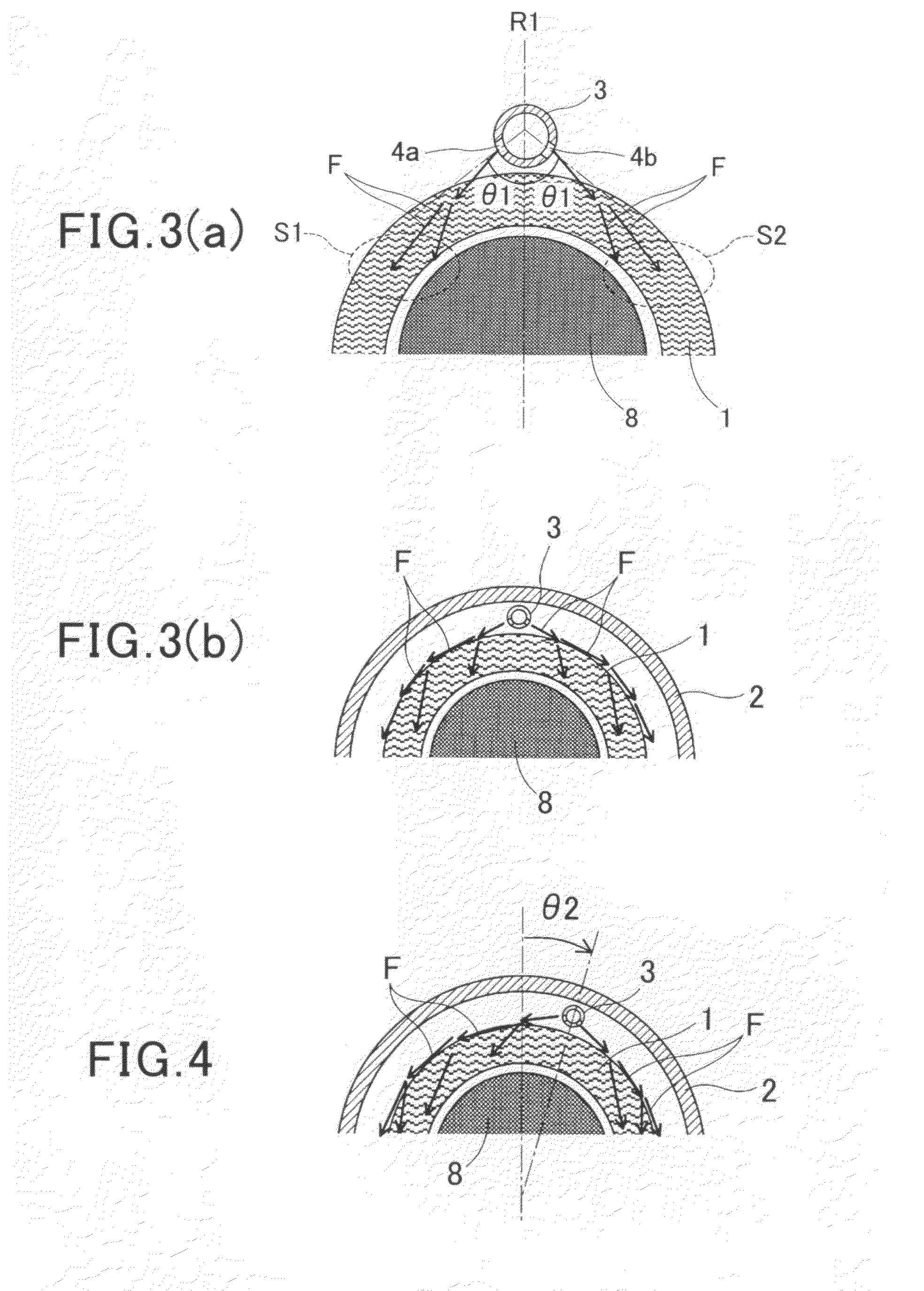Electric rotating machine with cooling mechanism
a cooling mechanism and rotating machine technology, applied in the direction of electrical equipment, dynamo-electric machines, supports/enclosements/casings, etc., can solve the problems of lack of cooling capability, lack of cooling of the coil end as a whole, and failure to drain the coolant from either end, so as to ensure the stability of cooling, enhance the efficiency of cooling the side surface, and discharge a large volume of coolant
- Summary
- Abstract
- Description
- Claims
- Application Information
AI Technical Summary
Benefits of technology
Problems solved by technology
Method used
Image
Examples
first embodiment
Referring to the drawings, wherein like reference numbers refer to like parts in several views, particularly to FIG. 1, there is shown an electric rotating machine M equipped with a cooling mechanism according to the invention. FIG. 1 is a longitudinal sectional view of the electric rotating machine M, FIG. 2(a) is a partial bottom view which illustrate a coolant supply pipe 3 disposed in the electric rotating machine M of FIG. 1. FIG. 2(b) is a longitudinal sectional view which shows the coolant supply pipe 3. FIG. 2(c) is a transverse sectional view, as taken along the C-C in FIG. 2(b). FIGS. 3(a) and 3(b) are schematically transverse sectional views, as taken along the line A-A in FIG. 1, which illustrate a positional relation between the coolant supply pipe 3 and a coil end 1 and streams of coolant when the electric rotating machine M is placed at a correct orientation, as illustrated in FIG. 1, without being inclined in any direction. FIG. 4 is a transverse sectional view, as t...
third embodiment
In order to alleviate the above drawback, the coolant supply pipe 12 of the third embodiment is so designed as to have the first outlet 4a greater in open area from the second outlet 4b which will be located farther from the vertical center line R1 than the first outlet 4a when the electric rotating machine M is tilted. Specifically, when the electric rotating machine M is tilted in the clockwise direction, as viewed in FIG. 6(b), the amount of the coolant to be discharged per unit time (i.e., the flow rate) from the first outlet 4a will be greater than that from the second outlet 4b. This will cause more amount of the coolant to flow downward over the left portion S3 of the coil end 1, which improves the degree to which the left portion S3 is cooled. The area of the surface of the right portion S4 of the coil end 1 to be cooled, as can be seen in FIG. 6(b), becomes smaller than that before the electric rotating machine M is tilted, thus keeping the degree to which the right portion...
fourth embodiment
The coolant outlets 4 of FIG. 10(a) or 10(b) may be equipped with the cylindrical guides 11 as employed in FIGS. 7(a) to 7(c). The first array and the second array of the outlets 4a and 4b may also be formed to have a locational relation, as illustrated in FIG. 10(c). For example, the outlets 4a correspond to outlets 4d, while the outlets 4b correspond to outlets 4f. The outlets 4d and 4f may also be equipped with the cylindrical guides 11d and 11f, respectively. The directions in which streams of the coolant are to be emitted from the outlets 4a and 4e to the coil end 11 may be altered by changing the orientations of the axes of the cylindrical guides 11c.
Each of the coolant supply pipes 3, 12, 13, and 14 may alternatively be designed to have the coolant outlets 4 whose open area varies as the electric rotating machine M is tilted. This may be achieved by the structure, as illustrated in FIGS. 10(d) to 10(g). The coolant supply pipe 3 of FIGS. 10(d) to 10(g) includes an open area ...
PUM
 Login to View More
Login to View More Abstract
Description
Claims
Application Information
 Login to View More
Login to View More - R&D
- Intellectual Property
- Life Sciences
- Materials
- Tech Scout
- Unparalleled Data Quality
- Higher Quality Content
- 60% Fewer Hallucinations
Browse by: Latest US Patents, China's latest patents, Technical Efficacy Thesaurus, Application Domain, Technology Topic, Popular Technical Reports.
© 2025 PatSnap. All rights reserved.Legal|Privacy policy|Modern Slavery Act Transparency Statement|Sitemap|About US| Contact US: help@patsnap.com



